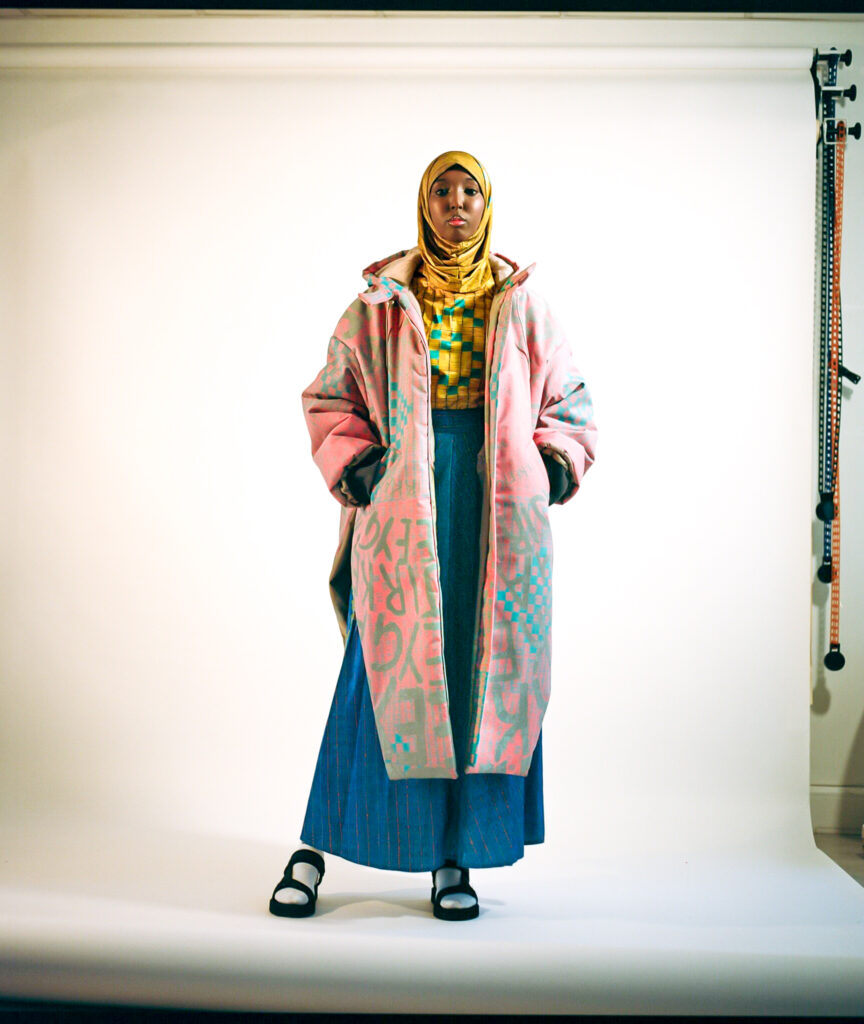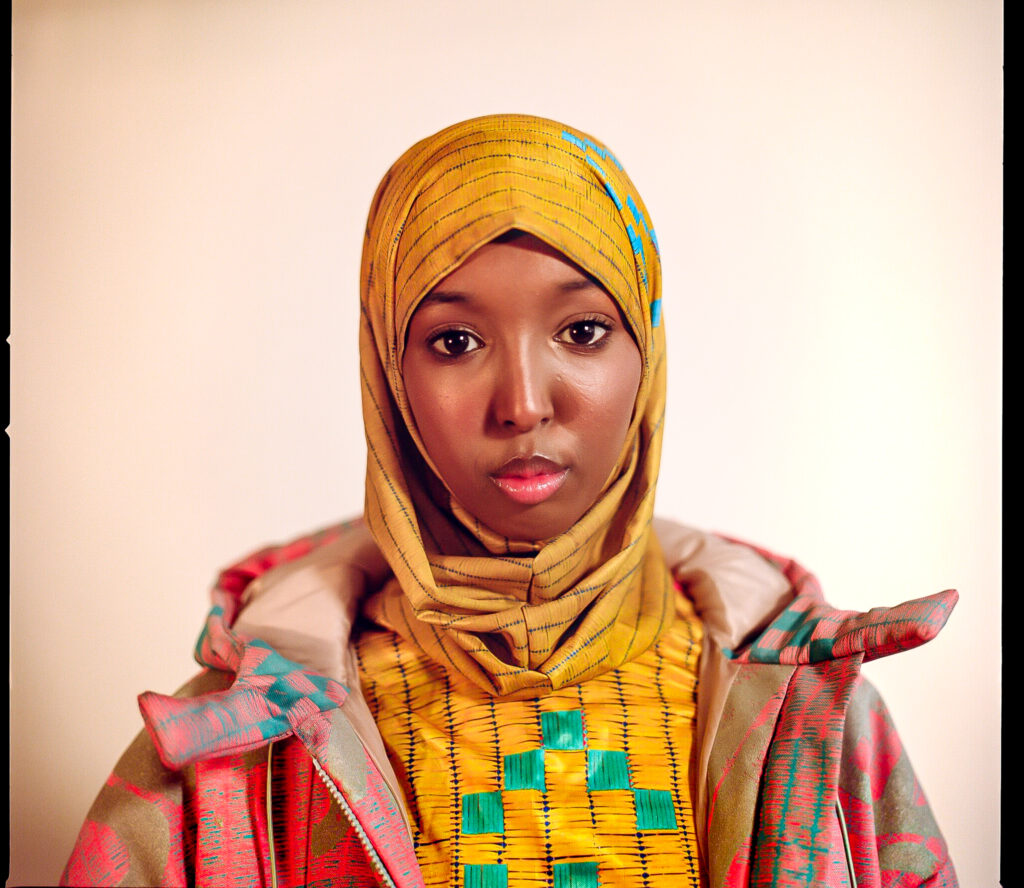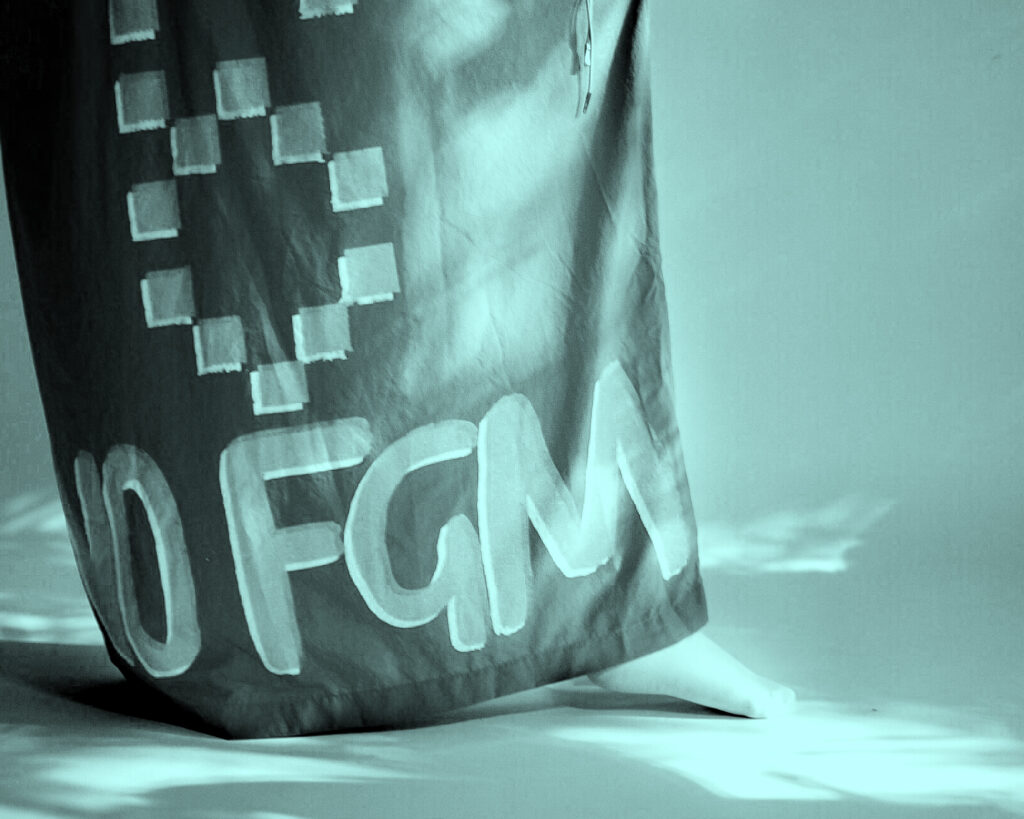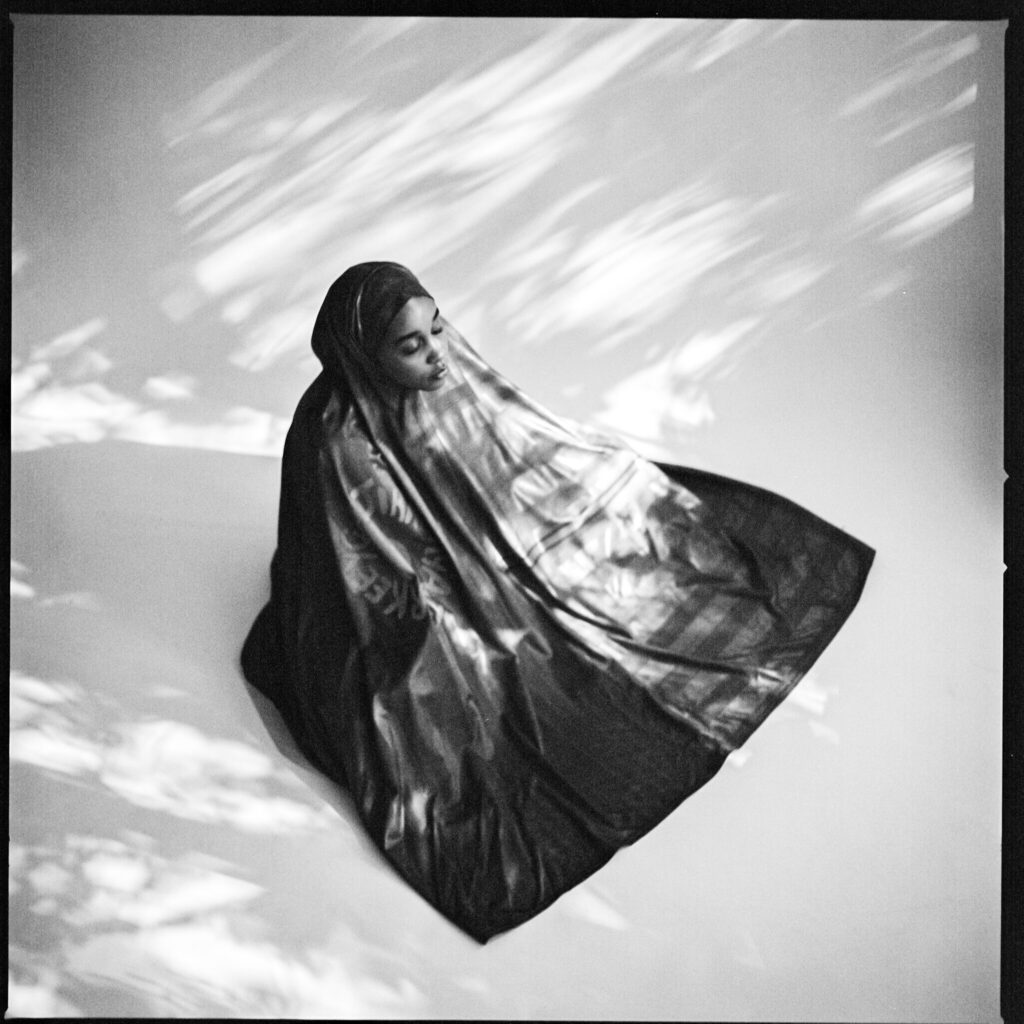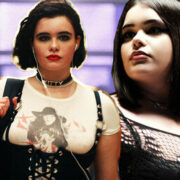Yasmin Ibrahim Protests FGM Practices In Her Modest Streetwear Collection
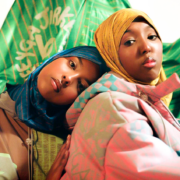
TW: Sexual assault and child abuse
Meet upcoming graduate designer Yasmin Ibrahim whose first collection is a moving message, encouraging women to take ownership of their bodies.
Ibrahim’s collection is inspired by her youth growing up as an African Muslim woman. She was subjected to the harmful practice of FGM when she was 6-years-old, a pain Ibrahim has taken and turned into beautiful pieces that interweave other fond memories she has of growing up in Somalia.
Putting forward modern streetwear garments for the modern woman, most of the collection is crafted from a football jersey fabric that stems from the second-hand football shirts Ibrahim saw kids wearing in Somalia. The oversized and flowy silhouettes are similar to what men and women traditionally wear in Somalia, but Ibrahim gives them an edge with her intentional use of colours and prints. The clothes sit away from the wearer’s body, surrounding it in a soft cocoon that draws the attention away from the body and directs the focus to the clothes instead.
We got to know Yasmin Ibrahim and her work better in the interview below:
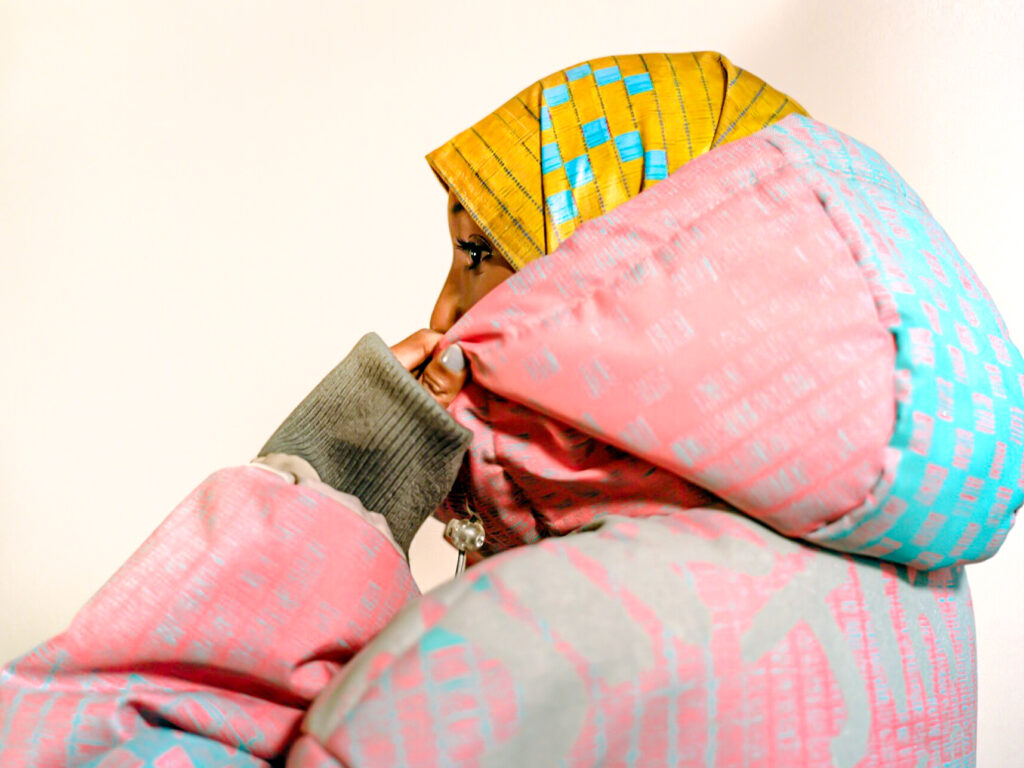
Tell us a bit about yourself?
Hi, I’m Yasmin Ibrahim, a 27-year-old Somali, born and raised. When I was around 10 years old, we migrated through Ethiopia and then to the UK. After going through different career choices, I chose to study fashion design. There are a lot of things that I like to do but my favourite to do is explore – different places, different art, just different worlds.
What got you interested in clothes/fashion?
Growing up as a Muslim in the UK, it was really hard to dress up. I always admired the clothes that my friends were wearing. Going to Primark and not finding anything to work with was difficult. I wanted to look cool and young but at the same time be modest. My mum would buy clothes for me from marketplaces, but they were not interesting to me. So as I grew older, I wanted to create modest streetwear clothing that made me feel cool but at the same time feel like I belonged in this modern British space.
How many pieces are featured in the collection?
I had three pieces featured in this collection. The original number was six, but because of COVID, we were really restricted. People were showing their designs through Zoom, and at the same time, the print and sewing room had limited access. With the remaining three designs that didn’t make it, I wanted to give them a fresh perspective. Three pieces didn’t feel like enough, so the next collection will be bigger, with new designs and a new colour palette.
The pieces are printed with text – can you tell us what the text says and what it means?
The print on the designs says ‘Jirkeeyga’, which translates to ‘my body’. It was really my own experiences with owning my body that inspired me. When I was a child, I was forced to undergo FGM. Nobody should decide what is done to your body. You’re in control of it, and I just wanted to remind people of that.
It is brave of you to speak about your experience through fashion – how has it helped you process what you experienced?
The thing is that I never spoke up about it before this. In my culture, it’s really common, and nobody addresses it. It’s wrong. It’s illegal. Becoming a mum recently, it became more of a priority to heal. I wanted to use fashion because it’s all about expression. A lot of people have advised me to go to counselling, and medical professionals would check up on me regularly. But through art, this pain becomes a piece of work, and it becomes a way to relieve pain. It was a challenge to turn something so negative into a positive, but it also helped me discover things in myself. It blossomed into beautiful garments and has a life now. It’s something physical that I can protest with. It helped me grow as a person who ultimately felt alone on this journey. By the time I finished my collection, I became really brave. I want to become an advocate for it through this art form.
Your use of colour is beautiful and feminine whilst being strong – is there a reasoning behind this?
The choice of colours comes from my country. We are quite proud to wear bright and vivid colours. The blues are symbolic of new beginnings and the green for growth. So I chose strong, positive colours to shock people whilst representing healing and fresh starts.
What was the process of making the collection like?
In the beginning, I had no idea what the collection was going to look like. But that’s what made it so exciting. It was this space to explore more. It was difficult because I had visions that were too graphic and sad. But I had no idea what the end goal was going to be. The process was tiring, as any designer will tell you. I was towards the end of the design process when COVID was at its peak. I wasn’t allowed to go to the uni for half of the year and had to make most of the garments in my tiny London flat. But it brought me closer to my designs. It’s so personal, and I was invested emotionally.
We can’t wait to see what’s next from you! Any clues?
I want to continue protesting that you have the right to do what you want with your own body. There’s a lot to say and a lot to share. So I’m working on a new collection that relates to everybody. I now have the chance to focus on this 100%. I can’t wait to show you what I’m doing.


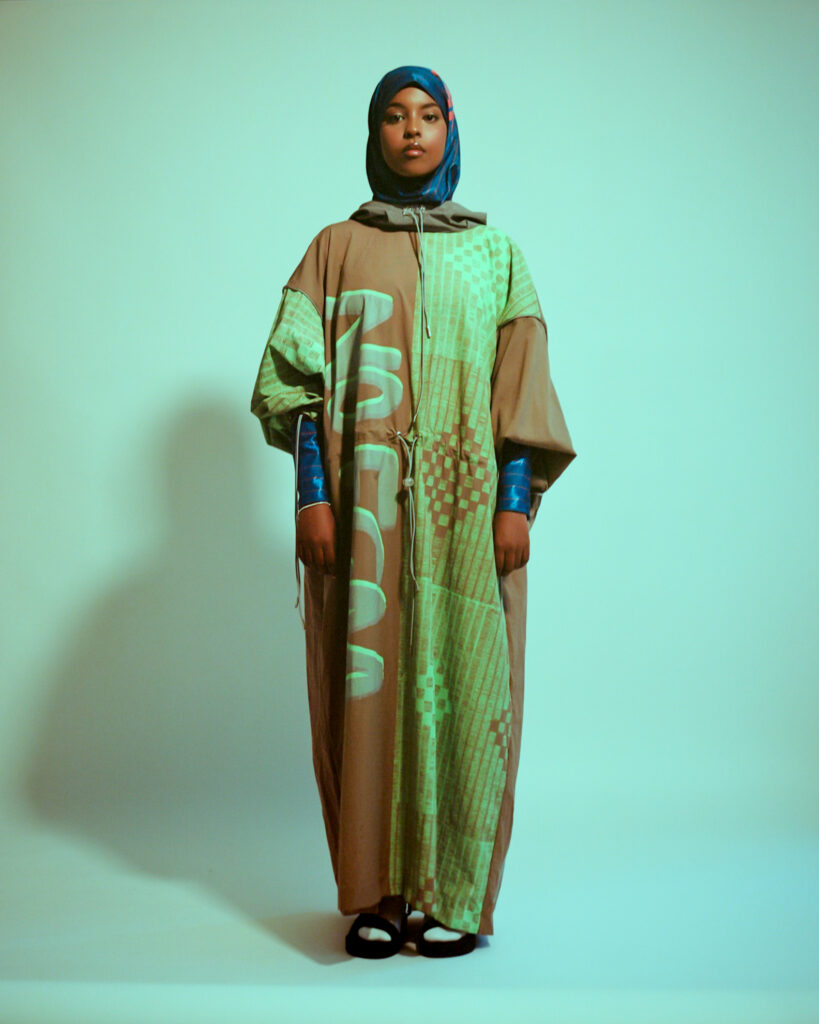
Photographer Amin McDonald
Models Samira, Muna, Nasteha
Stylist & Designer Yasmin Ibrahim
MUA Radwa
Video & Assistant Sanjida
Discover more from GUAP’s Fashion section here
